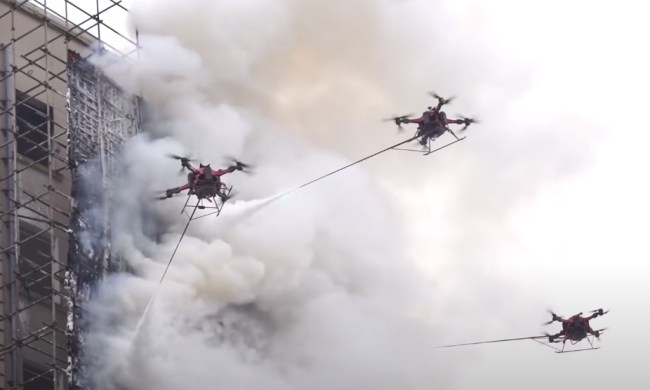
It’s a nightmare scenario that Google thinks specialized drones can solve. Last year, the search giant was awarded a patent for an automated fleet of quadcopters capable of ferrying medical supplies such as EpiPens, defibrillators, and medications from a centralized hub. According to the patent, the drones could be outfitted for individual health emergencies — some could assist with drowning victims, for instance, while others would contain packages for asthma and cardiac arrest.

A new patent awarded to Google on Monday describes how victims might summon such drones. In one example, it’s via a rectangular radio that looks a bit like a blue-light call box. A series of physical keys indicate the supplies available for delivery –“cardiac arrest,” “anaphylactic shock,” “neck injury,” “insulin,” “arm sprint,” “first-aid kit,” and “inhaler” — and a digital display shows the drone’s estimated arrival time. Some implementations of the system might even supply an “autonomous vehicle” that could provide immobile victims with transportation to the nearest trauma center.
Google thinks drones could save crucial time in an emergency. “A UAV […] can be dispatched […] without the human interaction required for typical 9-1-1 emergency response,” the patent says, “and may be able to travel faster than a ground vehicle because it does not face traffic conditions and will have less distance to cover since it can travel ‘as the crow flies’ versus following roads.” A typical 9-1-1 caller may spend as much as two minutes talking to an operator before an EMS unit’s even dispatched, according to the patent.
Given Google’s experimentation with autonomous vehicles so far, the patent may be less far-fetched than it seems. In October, FAA papers revealed the codenames for two experimental UAVs linked to Titan Aerospace, a firm specializing in high-altitude drone technology that Google acquired in 2014. And at an air traffic control conference in D.C. in November, head of Google’s Project Wing drone program David Vos said the company’s goal was to have a commercial drone-based delivery business “up and running in 2017.”
Google’s got a few details to iron out before its medical drone system becomes viable, and in particular a way to prevent abuse, but it may not be long before a splint-carrying drone comes to help you set your broken bone.


